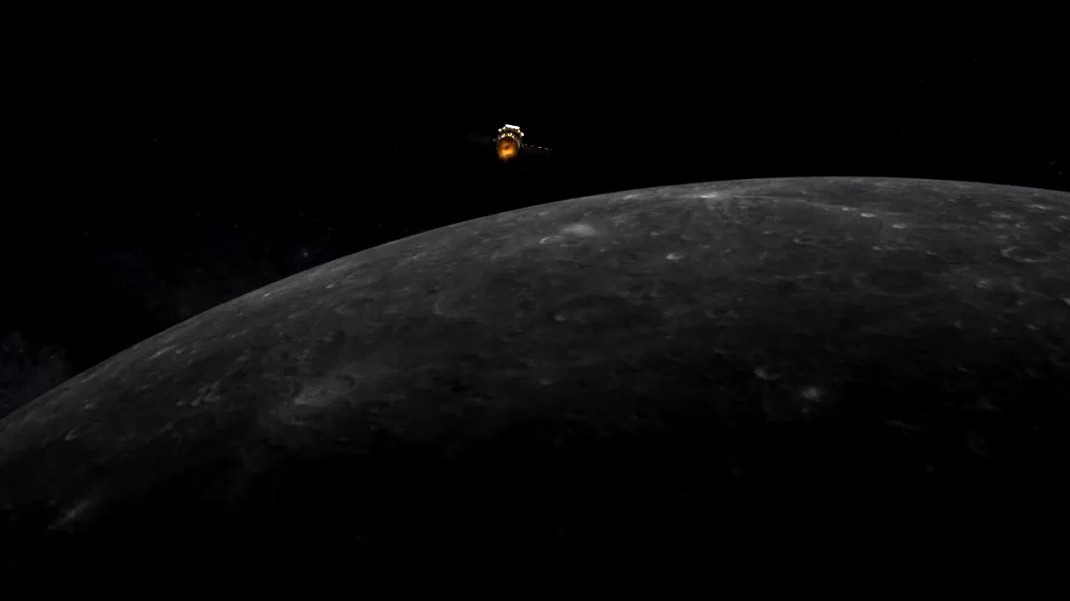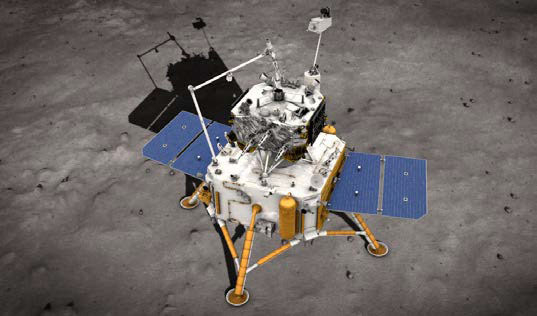China's Chang'e 5 enters lunar orbit for historic attempt to return moon samples
China's Chang'e 5 spacecraft has entered orbit around the moon ahead of an historic attempt to collect samples from the moon and return to Earth.
The 18,100-lb. (8,200 kilograms) Chang'e 5 launched on a Long March 5 rocket on Monday (Nov. 23) from the country's Wenchang Spacecraft Launch Site on Hainan Island and reached the moon today (Nov. 28) after an 112-hour journey.
The Chang'e 5 orbiter module fired its main engine at 7:58 a.m. EST (1258 UTC; 8:58 p.m. Beijing time) when 249 miles (400 kilometers) away from the moon, the China Lunar Exploration Program announced just under an hour later.
In pictures: China on the moon! A History of Chinese lunar missions

The spacecraft fired its 3,000-Newton engine for around 17 minutes. This slowed the spacecraft down enough to allow it to be captured by the moon's gravity.
The maneuver is a major step in the 23-day Chang'e mission that aims to deliver fresh lunar samples to Earth in mid-December. No such mission has been attempted since the Soviet Union's Luna 24 mission in 1976.
During its journey to the moon radio enthusiasts have been tracking the spacecraft, and even managed to decode data sent back to Earth, revealing footage showing sunlight shining on a solar panel.
Get the Space.com Newsletter
Breaking space news, the latest updates on rocket launches, skywatching events and more!
Related: The latest news about China's space program
THIS. IS. JUST. AWESOME. !!!This is video decoded from the 8455MHz high rate downlink @uhf_satcom received yesterday. All the work on the decoder and data analysis really paid off in the end!Video shows solar panel of Chang'e-5 glistening in the sun and dust floating around. pic.twitter.com/FKc92kgsklNovember 25, 2020

In the near future the mission lander will separate from Chang'e 5 orbiter and attempt to land near Mons Rümker in the western hemisphere of the moon. China has not released a time and date for the landing attempt, but lighting from the sun over the designated landing would allow an attempt as early as Sunday.
Mons Rümker is a peak with the huge volcanic plain of Oceanus Procellarum ("Ocean of Storms"). Some areas around the site are believed by scientists to be made of rock that is just over 1 billion years old. It is thought these areas were created by geologically recent volcanism and thus show fewer craters than older regions. By contrast the samples collected by the U.S. Apollo and Soviet Luna missions are all over 3 billion years old.
The lander is equipped with both a drill and a scoop. Together they will collect around 4.4 lbs (2 kilograms) of lunar material which will be placed in a container aboard an ascent vehicle atop the lander. Around two days after the landing the ascent vehicle will take off and attempt to rendezvous and dock with the orbiter module waiting in lunar orbit.
Pieces of heaven: A brief history of sample-return missions
Once docked, the ascent vehicle will transfer the sample container to a reentry capsule attached to the orbiter. The orbiter will subsequently begin the roughly 4.5-day trip back to Earth and release the reentry capsule just before arrival.
If all goes according to plan the Chang'e 5 reentry capsule will perform a ‘skip reentry’ bouncing off the atmosphere once before finally reentering the atmosphere. It will then parachute to the ground within a designated area in Inner Mongolia between Dec.15-17.
Getting hold of samples would allow scientists to confirm the age of the rocks using radiometric dating methods. This would also allow scientists to compare similarly cratered areas on major rocky bodies in the solar system to get more accurate estimates of their ages and histories.
The mission is China's sixth and by far most complex lunar mission. The country has launched two lunar orbiters, Chang'e 1 and 2, and two landers and rovers for the Chang'e 3 and Chang'e 4 missions. The ongoing Chang'e 4 mission made the first ever landing on the far side of the moon in January 2019.
The Chang'e 5T1 mission practiced the high-speed return from the moon and skip reentry in 2014. The mission’s orbiter also imaged the landing site for the Chang’e 5 mission proper.
Correction: An earlier version of this story stated that Chang'e 5 mission scientists would use radiocarbon dating on the lunar samples returned. They will actually use radiometric dating methods.
Follow us on Twitter @Spacedotcom and on Facebook.
Join our Space Forums to keep talking space on the latest missions, night sky and more! And if you have a news tip, correction or comment, let us know at: community@space.com.

Andrew is a freelance space journalist with a focus on reporting on China's rapidly growing space sector. He began writing for Space.com in 2019 and writes for SpaceNews, IEEE Spectrum, National Geographic, Sky & Telescope, New Scientist and others. Andrew first caught the space bug when, as a youngster, he saw Voyager images of other worlds in our solar system for the first time. Away from space, Andrew enjoys trail running in the forests of Finland. You can follow him on Twitter @AJ_FI.









